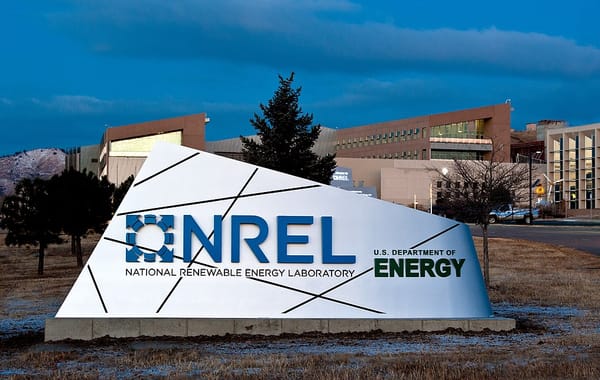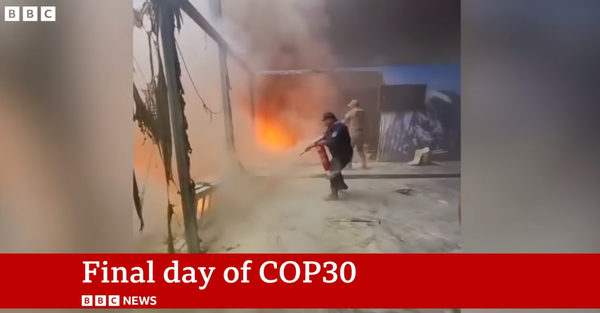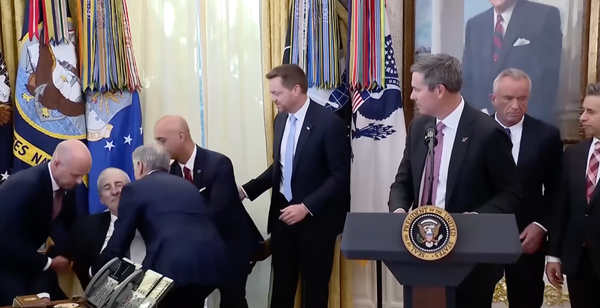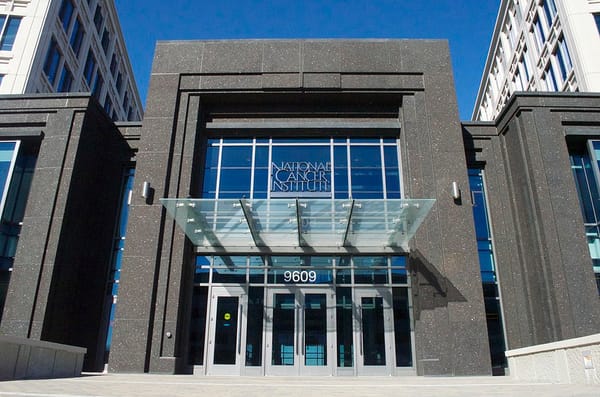Letting Silicon Valley Geoengineer the Atmosphere Will End Badly
We already have plenty of evidence of what happens when things better left to governments — which in this case might decide to never flip the switch at all — are ceded to private industry.

This post is free, so please share widely, and please consider subscribing to support my independent writing and reporting.
On Friday, reports from Heatmap and Politico, among others, emerged about a company called Stardust Solutions completing a $60-million fundraising round. The company, led by former Israeli government physicists and registered in Delaware though headquartered in Tel Aviv, wants to dim the sun.
That's the elevator pitch for this branch of solar geoengineering, known as solar radiation modification (SRM) or stratospheric aerosol injection (SAI). For the uninitiated, the idea, which has been kicking around in climate change circles for decades, involves mimicking the effects of large volcanic eruptions by dropping a bunch of tiny reflective particles — sulfur dioxide is most commonly cited, though the newly flush company goes another route — up into the stratosphere. That would send a small percentage of incoming sunlight back into space, meaning it does not reach the ground and continue to help heating up the place we all live.
Again, this has been under discussion for a long time — only now private industry has started to get its hooks in the concept. Stardust is a for-profit company, and it raised that $60 million via some familiar sources. Per Politico, the funding round was conducted by "Lowercarbon Capital, a Wyoming-based climate technology-focused firm co-founded by billionaire investor Chris Sacca."
This is, in a word, grim. SRM has long been considered some combination of dangerous, complicated — in terms of governance and international logistics, not the actual tech involved — and a climate "solution" of last resort. The litany of caveats and complaints is almost a mantra at this point for people who have been writing about this for a while: it wouldn't address the root problem of CO2 in the atmosphere, it wouldn't do anything to mitigate ocean acidification, it would likely alter global weather patterns including monsoons in ways that could have significant agricultural impact, stopping a program suddenly could result in rapid and dangerous warming, it might give nefarious actors (read: the oil and gas industry) even more leeway to keep hindering climate change mitigation, it is a large enough experiment as to likely have some "unknown unknowns" that we definitionally cannot study.
All of that and more is why the people engaged in these decades-long discussions — academics, primarily, along with other climate experts and international diplomats and negotiators — have kept the concept largely on the sidelines. It gets pushed further and further into big reports like those put out by the Intergovernmental Panel on Climate Change, and some money flows to research projects, but that research has stayed confined to computer modeling. Among the only publicly prominent experiments that aimed to take it into the physical realm — called SCoPEx, run by a group at Harvard, set to take place in the far north of Sweden, and notably not even involving any actual release of sulfur dioxide in its first stages — was canceled after years of public outcry before it ever got off the ground.
In short, the idea has stayed theoretical because it would be very, very hard for the world to collectively agree on its use — by its nature, a functional SRM program would be global in scope, and the almost-200 countries involved in international climate deliberations might never agree on the particulars or its deployment at all. As such, the worry grew over unilateral action — call it rogue geoengineering — an idea I explored more than six years ago in a piece for Pacific Standard, where I imagined a trio of billionaires unleashing a global SRM program from, essentially, an island lair because the world wouldn't stop dragging its heels on the legitimate fixes for climate change.
As it turns out, I gave these fictional plutocrats too much credit — the assumption in that rogue scenario was that there are some very rich people who genuinely want to fix a critical problem. It turns out they might just do it to get even more rich.
Stardust — which says it has a proprietary type of particle that unlike sulfur dioxide will be "inert, wouldn’t accumulate in humans or ecosystems, and can’t harm the ozone layer or create acid rain," which, well, let's wait and see — is seeking to monetize SRM by securing government contracts. The people pouring money into them, including Italian industrial magnates, former Facebook executives, and various companies around the world, aren't doing so out of the goodness of their hearts. There is money, still, in burning oil and gas, but someday there may be money in putting an alternative to the resultant CO2 up in the sky, and the usual suspects want in on the ground floor. Today it's a strange Israeli-American firm with relatively minor Silicon Valley backing; tomorrow it's Amazon or Oracle or Palantir throwing some weight around.
Another company called Make Sunsets made some sideshow-ish news recently in the same space, already selling "cooling credits" and releasing balloons with small amounts of SO2 in Mexico (which led to a ban there) and in the US. This falls more on the low-level grifter side of the ledger than the venture-backed, billion-dollar government contracts sort of thing, but it demonstrates that the basic concept of monetizing theoretically cooling pollution is at least approaching the mainstream.
As a collection of geoengineering experts wrote in a paper in the journal Earth System Governance earlier this year, the emergence of a for-profit version of the idea is not surprising, given, well, capitalism. Still: "The involvement of corporate actors motivated by profit underscores the deep implausibility of achieving collective democratic governance of solar geoengineering within our current political-economic system."
We already have plenty of evidence of what happens when things better left to governments — which in this case might decide to never flip the switch at all — are ceded to private industry. How comfortable are you with one absurdly damaged man controlling two-thirds of all the satellites currently in space?
But when Elon's rockets blow up and rain hellfire down over the Caribbean, it is still unlikely to start a war. If some billionaire-backed companies start geoengineering the stratosphere, and some major powers concerned over monsoon rains and agricultural output would prefer they didn't... what then?
In short, there isn't a reasonable scenario where we grant some rich people control over the planet's thermostat and everything turns out fine. Possibly the scariest thing about SRM is that it would almost certainly work: averaged out across the globe, throwing some sulfur dioxide (or theoretical miracle particle) into the sky would actually lower the temperature, and with that likely reduce some increasingly dire climate change impacts. The second-scariest thing about it is that it is likely to be pretty cheap — cheap enough for the tech bros who occasionally reinvent the city bus and announce they have "disrupted" transportation to do it, with the promise of fleecing the governments of drowning and burning countries for their services.
Stardust says it will use its newfound wealth to begin "controlled outdoor experiments" by April of next year. What could possibly go wrong.




